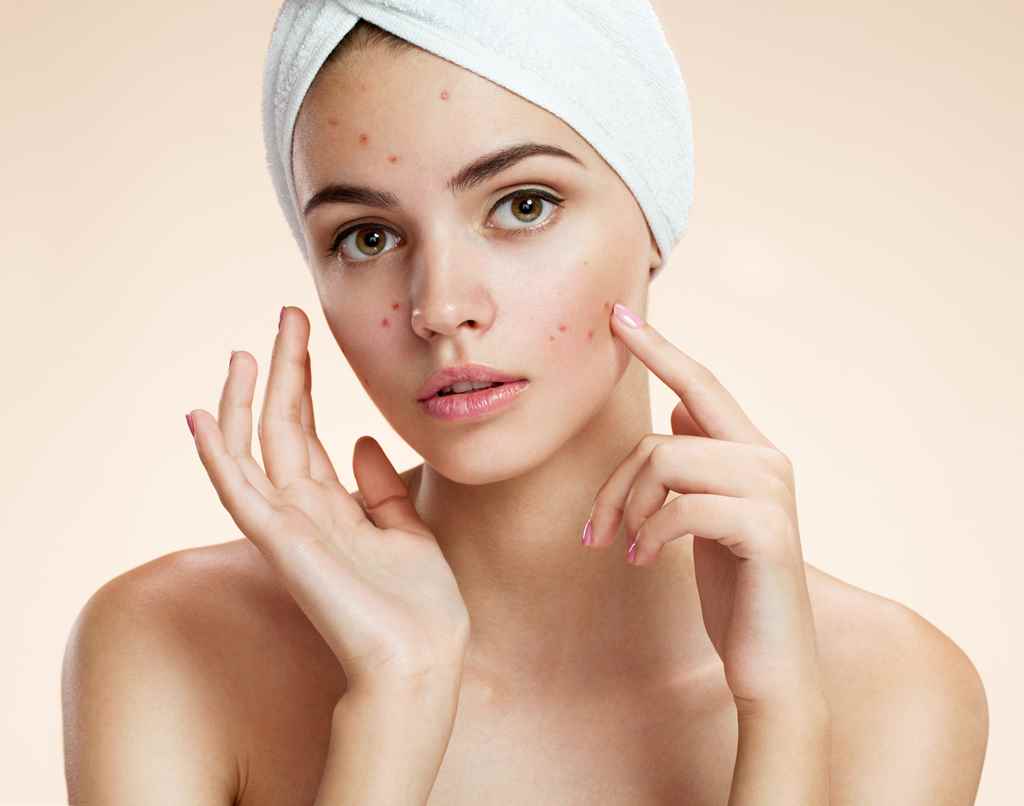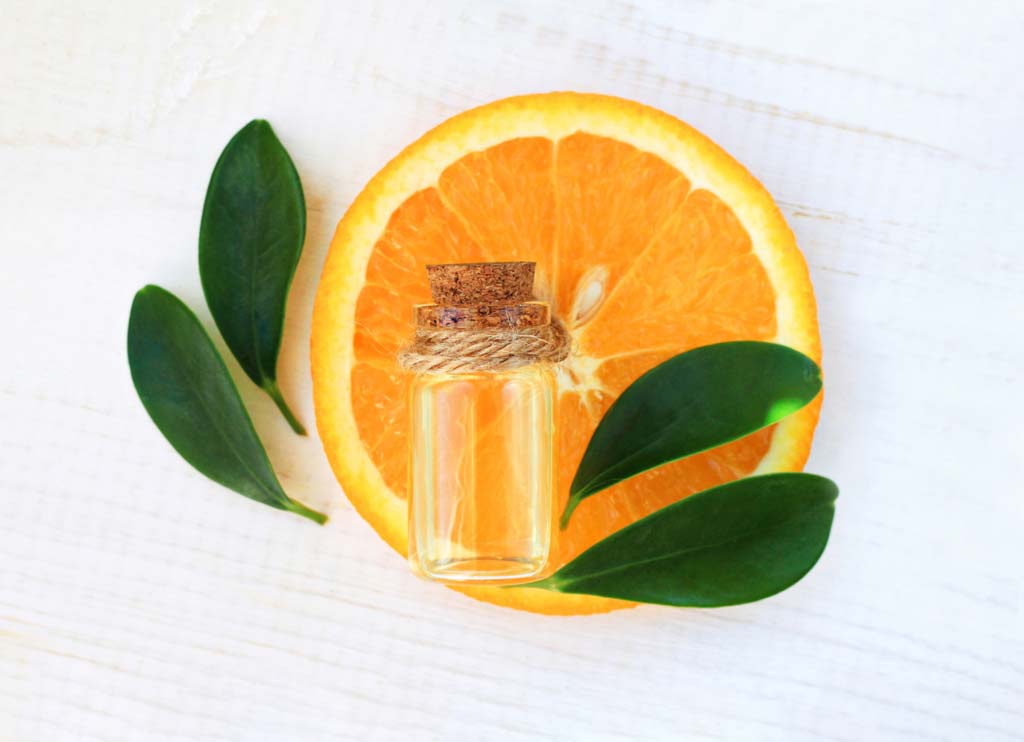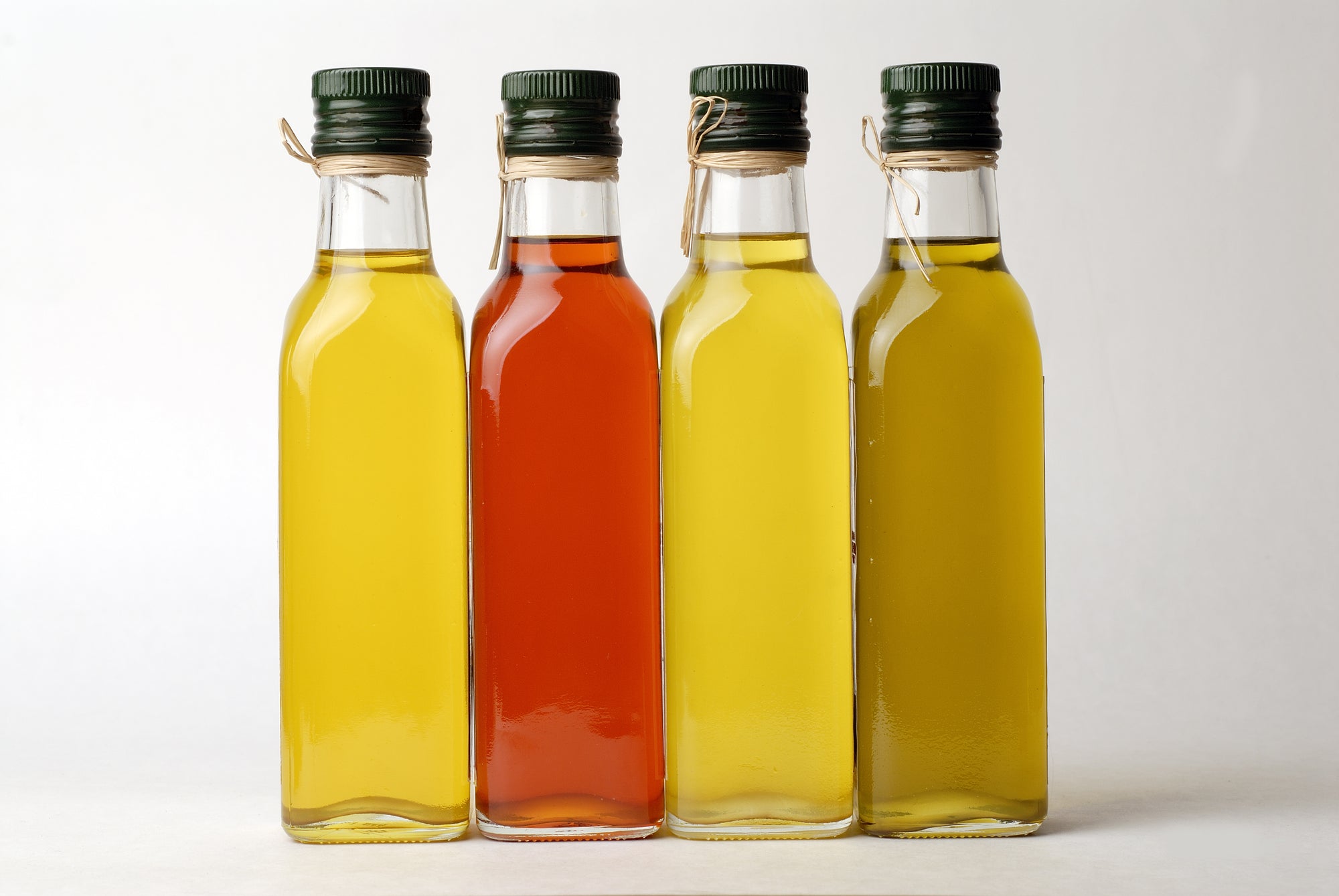Tea Tree Oil is an essential oil extracted from a species of a shrub called the Melaleuca alternifolia, commonly grown in the Southeast and north coast region of Australia. The magical concentrated shrub extract is highly effective in curing skin related ailments such as acne, ingrown hair, fungal growth, warts, skin infections, pigmentation, dry patches of skin, rashes, and scarring. It is also used as a skin toner, clarifying lotion and makeup remover.
The distilled essential oil has anti-inflammatory, antibacterial and antimicrobial properties which act as an antiseptic for the treatment of pimples, skin infections, eczema, psoriasis and scars. It repairs and restores the natural pH balance of the skin, provides the needed hydration and helps prevent excess oil accumulation. The oil gives a natural glow and smooths out the tiny bumps on the skin (i.e., milia caused due to excess accumulation of moisture and lack of exfoliation). It is best used for preventing recurrence of skin related ailments such as pimples, pigmentation and uneven skin tone. Hence, it is important that people with oily skin use the oil regularly. It is readily available in the market and can be found as an active ingredient in several skincare products. Most dermatologists and skin specialists around the world recommend clients with sensitive skins to include the oil in their daily skincare routines.
Benefits Of Tea Tree Oil For Acne

1. Cleanses Skin
Today as per high demand, tea tree oil face washes and cleansers are readily available over-the-counter. They can be used daily to get rid of the dirt and grime of the city’s pollution. They are also effective in removing makeup and oil residue leftover on the skin. It is considered a magical ingredient in treating skin related ailments such as stubborn pimples, rashes, dry and dull skin. The essential oil brightens the face, repairs the skin texture, combats blemishes and simultaneously cleanses the dead cells off the skin. It gently penetrates the skin and extracts the impurities, leaving the face blemish-free. You can use a tea tree oil face wash for cleansing the face. After that use a clean damp cloth or water to wash off the soapy residue off the face. Dab the face dry and apply a toner to balance the pH level of the skin. You can also use a tea tree oil exfoliant to scrub the oil and dead cell skins off the face.
Why don't you check out Anveya Tea Tree Oil? It combats bacteria and various other infections that causes ill health for your skin, hair, nails and overall wellbeing.
ANVEYA AUSTRALIAN TEA TREE OIL, 100% PURE, 15ML
- Works on ACNE, SCARS & PIGMENTATION due to its antibacterial and anti-inflammatory properties
- Application in treating SKIN, NAIL & TOE INFECTIONS
- Great for HAIR. Fights against DANDRUFF with its antifungal properties
- Diffuse for fresh & CLEAN HOME
2. Reduces Warts
Warts occur when the skin comes in contact with the bacteria and virus from the strains of the Human Papilloma Virus (HPV) family. The contagious virus has infected the human population for thousands of years. Tea tree oil which has been a means of alternative medicine for years combats the virus by boosting the immune system’s white blood cells to fight off the bacteria containing the HPV. If the warts are left untreated it can take a year or two for them to completely heal and disappear. In order to treat the wart, dab on a tea tree oil-soaked a cotton ball on to it as a spot treatment. Hold the cotton ball down for 15-20 minutes. You can also cleanse the wart area with a homemade or over-the-counter tea tree oil cleanser. This will help in removing the bacteria and infection that can get passed on from person to person.
3. Shrinks Pimples
The right concentration of tea tree oil applied on the face and other parts of the acne-prone skin can help in reduction of different types of pimples, i.e., pustules and papules, blackheads and whiteheads, nodules and cysts. The oil contains antibacterial and antimicrobial elements which help in combating the blisters and liquid pus present inside the pimples. It extracts oil, bacteria, dead skin cells and dirt that blocks the pores on the skin leading to the formation of acne and pigmentation. You can apply a layer of tea tree oil on face leave it overnight. Make sure that the oil used is diluted to the right concentration. Higher than the recommended concentration of tea tree oil can have strong and adverse effects on the skin. You can apply a tea tree oil face mask for 15-20 minutes every night before bed or dab the oil on the blemishes for spot treatment. For best results use products with a combination of tea tree oil, salicylic acid, and benzoyl peroxide. Always apply a layer of sunscreen over the product to protect the skin from any irritation occurring from the clash of the active ingredients with the sun-rays.
Why don't you check out Anveya's 24k Gold Goodbye Acne Kit? It comes with a cleanser and serum containing Azelaic Acid, Niacinamide, Tea tree oil, and other ingredients immensely effective in fighting acne.
ANVEYA 24K GOLD GOODBYE ACNE KIT
- Helps in skin renewal
- Fights against acne causing bacteria
- Control sebum secretion
- Calms and soothes active acne
- Works on acne scarring and blemishes
4. Cuts Grease And Dirt
The biggest cause for recurrence of pimples are grime and dirt accumulated on the skin. The dirt acts as an instigator and clogs the pores. This results in formation of pimples, blackheads, whiteheads and gives rise to bacteria. Tea tree essential oil has the needed compounds for extracting the dirts from inside the clogged pores and removing dead skin cells. It restores the moisture back on the skin. The best way to remove the dirt and grime is by using a tea tree oil scrub or face wash.
5. Prevent Scarring
Tea tree oil is not only effective in healing acne scars but it can also help in preventing further scarring of the body from a future injury. While most small injuries heal quickly and naturally repair itself from thick connective tissues, certain bodies produce more scar tissues than normal causing an injury to develop into a scar. These scars are called keloid and hypertrophic scars. Though these scars fade away after a while, they never really completely disappear. In order to reduce the risk of scarring, tea tree oil should be applied on a fresh wound or acne regularly. It can also be applied to recent scars to reduce visibility. Use the tea tree oil in a diluted form to disinfect the acne scar. First wash the area with running water, clean it and then mix few drops of the diluted oil with water before dabbing the area with a cotton ball soaked with the mixture.
6. Prevent Ingrown Hair
Pimples can cause the development of ingrown hair and scarring. Ingrown hair can be painful on the face and it requires a lot of effort to extract them from the surface of the skin. It can cause skin irritation and inflammation. The skin above the ingrown hair can swell and develop into an infection. Tea tree oil helps in removing the ingrown hair and soothing the inflammation. It opens the pores and loosens up the ingrown hair. For this, you can apply a layer of tea tree oil on the face and leave it overnight. You can also use a gentle tea tree oil face wash. You can make a tea tree oil face soak with few simple ingredients to remove an ingrown hair. All you need is warm water and tea tree essential oil. Mix both of them together and soak a washcloth in it. After that dab the soaked washcloth to the infected area.
Also Read : Ingrown Hair - Causes and ways to prevent them
7. Removes Dark Spots
Pimples have the tendency to develop into dark spots after fading away. This especially happens to people with Indian skin tones. The dark spots take a long time to go away. They usually occur around the lips, on the forehead and on the cheeks. Tea tree oil helps in removing the pigmentation. It can also be used in the form of a scrub or a face wash. A layer of tree tee oil (diluted to the right consistency) can be applied on the face as a mask. It should be left overnight for best results.
8. Prevent Skin Infection
By far the biggest benefit of using tea tree oil for acne is the prevention of skin infections. Pimples if left untreated, can develop into lumps filled with pus. These lumps are called Lymph nodes. Lymph nodes are tiny bumps filled with a liquid fluid called lymph. They trap the bacteria and harmful toxic waste as a measure of protection because they are an extension of the immune system. However, in this process skin infections can develop and lymph nodes can become enlarged and swollen. They appear mostly on the face, neck, armpits and in the groin area. The swollen lymph nodes return back to their normal size when the skin infection is over. Tea tree oil application can help in preventing swollen lymph nodes.
Methods To Use Tea Tree Oil For Skin Acne
There are several methods to use tea tree oil for acne-prone skin. You can either use the essential oil alone on the infected area or you can combine the oil with other ingredients for best results. The following are some ways tea tree oil can be used to prevent acne:
1. Lavender Oil And Tea Tree Oil
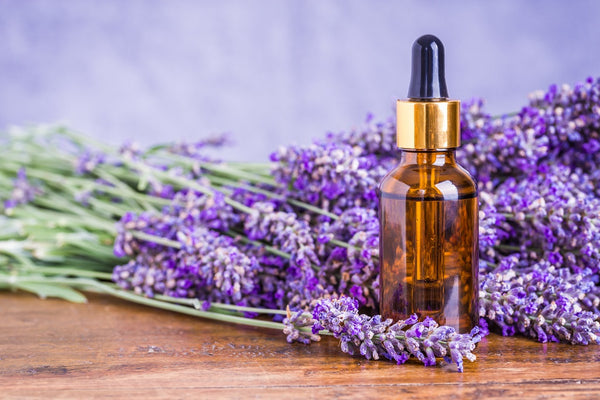
Both lavender and tea tree essential oils have antimicrobial properties best suited for acne-prone skin.
You Will Need
- 3-4 drops of lavender oil
- 3-4 drops of tea tree oil
- 1 tablespoon of jojoba oil
- 1 small dropper bottle
Method
- In a small bottle, combine all the three ingredients.
- Use around 3-4 drops of the mixture and apply it to the face.
- Leave the layer on the skin overnight.
How Often
Apply it every night until the skin starts clearing up.
Why This Works
The combination of both the essential oils clears the skin, prevents infection and reduces the appearance of enlarged pores. Lavender oil has the same antibacterial properties as tea tree oil. Hence, together they both give quick and effective results.
2. Tea Tree Oil For Acne
A simple method with just two ingredients.
You Will Need
- ½ cup of water
- 4-5 drops of tea tree essential oil
- 1 cotton pad
- 1 small bowl
Method
- Add 4-5 drops of tea tree essential oil to a bowl containing ½ cup of water.
- Soak the cotton pad in the mixture.
- Dab the soaked cotton pad on the acne as a spot treatment.
How Often
You can repeat this twice a day until you start seeing results.
Why This Works
This works because tea tree oil has antiseptic and antibacterial properties which clean out the pores and prevent further acne breakouts.
Caution
Make sure you use organically harvested tea tree essential oil. The chemicals included in a few brands might cause harm to the skin. Also, dilute the tea tree oil before using because the topical application might irritate the skin.
3. Coconut/Almond Oil And Tea Tree Oil
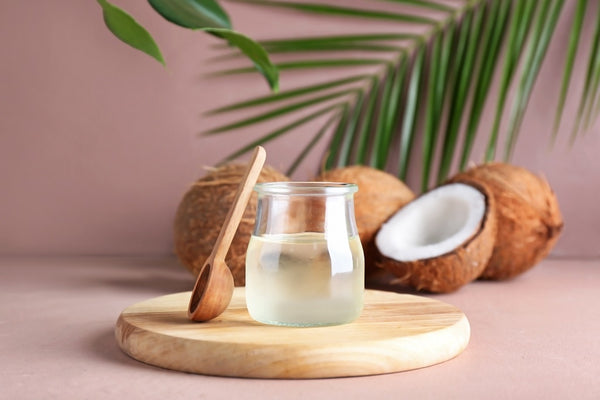
This quick recipe can be a great natural moisturizer for the skin.
You Will Need
- 2 tablespoons of coconut or almond oil
- 2-3 drops of tea tree oil
Method
- Add 2-3 drops of tea tree essential oil to 2 tablespoons of coconut or almond oil in a small mixing bowl.
- Stir the contents well.
- Now apply a layer of the mixture on the face and leave it overnight.
How Often
You can use this twice a day. However, avoid applying it in the morning if you plan on going out in the sun. The components of the essential oils might cause irritation when exposed to daylight.
Why This Works
The coconut or almond oil provides hydration to the skin and restores the moisture to the surface of the skin. Whereas, the tea tree oil acts on reduces the acne.
Also Read : Almond Oil for Skin - Benefits and Recipe
4. Calamine Lotion And Tea Tree Oil
Calamine has zinc which helps in drying out the pimples. It also helps in dealing with skin irritation and inflammation.
You Will Need
- 1 tablespoon of Calamine lotion
- 2-3 drops of tea tree oil
Method
- Mix 2-3 drops of tea tree oil and calamine lotion on the palm of your hand.
- Apply the mixture to the face and leave it overnight.
How Often
Apply this daily before going to bed.
Why This Works
The zinc present in the calamine lotion helps in reducing the appearance of pimples.
5. Baking Soda And Tea Tree Oil

The combination of two helps in extracting the dirt, grime and dead skin cells off the face.
You Will Need
- 1 tablespoon baking soda
- 3 drops tea tree oil
- 1 tablespoon of water
- 1 mixing bowl
Method
- Combine all the ingredient together in a mixing bowl.
- Continue mixing until it turns into a paste
- Use it as a scrub on the face.
- Massage it in circular motions for 5-10 minutes before washing it off with water.
How Often
Use it as a scrub 3-4 times a week on alternate days.
Why This Works
It works well in maintaining the pH balance of the skin. It reduces the appearance of enlarged pores and extracts the dead skin cells of the face.
6. Apple Cider Vinegar And Tea Tree Oil
Apple cider vinegar contains malic acid which is good for neutralizing the skin tone.
You Will Need
- 1 tablespoon of apple cider vinegar
- 3 drops of tea tree essential oil
- 1 small mixing bowl
- 1 Q-tip
Method
- Combine the apple cider vinegar and tea tree essential oil in a mixing bowl.
- Soak a Q-tip with the mixture and apply it to the acne-prone area.
How Often
You can use this twice daily, in the morning and before bedtime.
Why This Works
It balances the pH level of the skin and extracts the accumulated dead skin cells off the face.
7. Lemon And Tea Tree Oil

Both lemon and tea tree oil have antibacterial and anti-inflammatory properties.
You Will Need
- 2 teaspoons of lemon juice
- 2-3 drops of tea tree essential oil
- 1 cotton pad
- 1 small mixing bowl
Method
- In a bowl, mix 2 teaspoons of lemon juice and 2-3 drops of tea tree essential oil.
- Soak a cotton pad in the mixture.
- Dab the cotton pad on the infected areas.
How Often
You can use this recipe twice a day. Avoid it in the mornings if you plan on going out in the daylight.
Why This Works
This works well because lemon helps in reducing inflammation and redness caused by pimples. It also helps in reducing the appearance of dark spots and pigmentation.
Caution
Avoid using the mixture on sensitive skin as lemon juice and tea tree oil may cause skin irritation, itching and redness.
8. Witch Hazel And Tea Tree Oil
Witch hazel helps in clarifying and toning the skin. It balances the pH level of the skin.
You Will Need
- ½ cup of witch hazel
- 5 drops of tea tree essential oil
- 1 cotton pad
- 1 mixing bowl
Method
- Combine the witch hazel and tea tree essential oil and stir well.
- Apply the blend on the acne with a soaked cotton pad as a spot treatment.
How Often
You can use this twice daily in the morning and at night before bed. Follow it up with a moisturizer.
Why This Works
The witch hazel acts as an astringent. It refreshes and provides a healthy glow to the skin.
9. Aloe Vera And Tea Tree Oil

Aloe Vera provides the needed hydration to the skin. It reduces skin irritation and inflammation. It also has medicinal properties which help in curing several skin ailments.
Also Read : Skincare Benefits Of Aloe Vera
You Will Need
- 2 tablespoons of pure aloe vera gel
- 3 drops of tea tree essential oil
- 1 cotton ball
- 1 mixing bowl
Method
- Combine the ingredients in a bowl.
- Use a cotton ball to apply the mixture to the pimples.
How Often
You can use it twice a day, in the morning and evening.
Why This Works
The combination of both can help in reducing pimples, blemishes, itching, scarring, redness, pigmentation and several other skin ailments.
What Are The Side Effects Of Tea Tree Oil?
Tea tree oil may cause allergic reactions and irritation to some people. It is best to do a patch test before applying it on the skin. In some cases, the oil may cause skin dryness, itching, stinging sensation and redness. It is not deemed safe to consume tea tree oil from the mouth as it can have many harmful effects on the body.
Precautions To Be Taken
- Avoid using tea tree oil and lavender oil on young boys. A study as shown that it can cause hormonal imbalance and breast development in boys who have not yet reached puberty.
- Use organically harvested tea tree essential oils. Only buy from the reputable brands who do not dilute the oil with other chemical ingredients or alcohol which leads to skin irritation and dryness.
FAQs
1. Tea Tree Oil Work For Everyone?
Tree tree oil best works for people with normal, combination, oily and acne-prone skins. It should not be used on dry and patchy skin as it may extract the moisture off the skin. It is recommended to first do a patch test before applying it on the skin. Some compounds of the tea tree oil may cause allergic reactions or irritation to the skin. In case of sensitive skin, always consult a dermatologist before using tea tree oil.
2. From Where To Can Buy Tea Tree Oil?
Tea tree oil is readily available in the market. It is recommended to buy from the reputable brands as some products might contain chemicals which can cause harm to the skin. Always use essential oils which are organically harvested. You can buy it online, from a pharmacy or any skincare store. It is also available in the form of scrubs, face washes, moisturizers and face masks.
Disclaimer: All the content on anveya.com/blogs is solely for information. It is not intended to be a substitute for professional medical advice, diagnosis or treatment. Always seek the advice of your physician or a qualified health care provider. The information, suggestion or remedies mentioned on this site are provided without warranty of any kind, whether express or implied.

